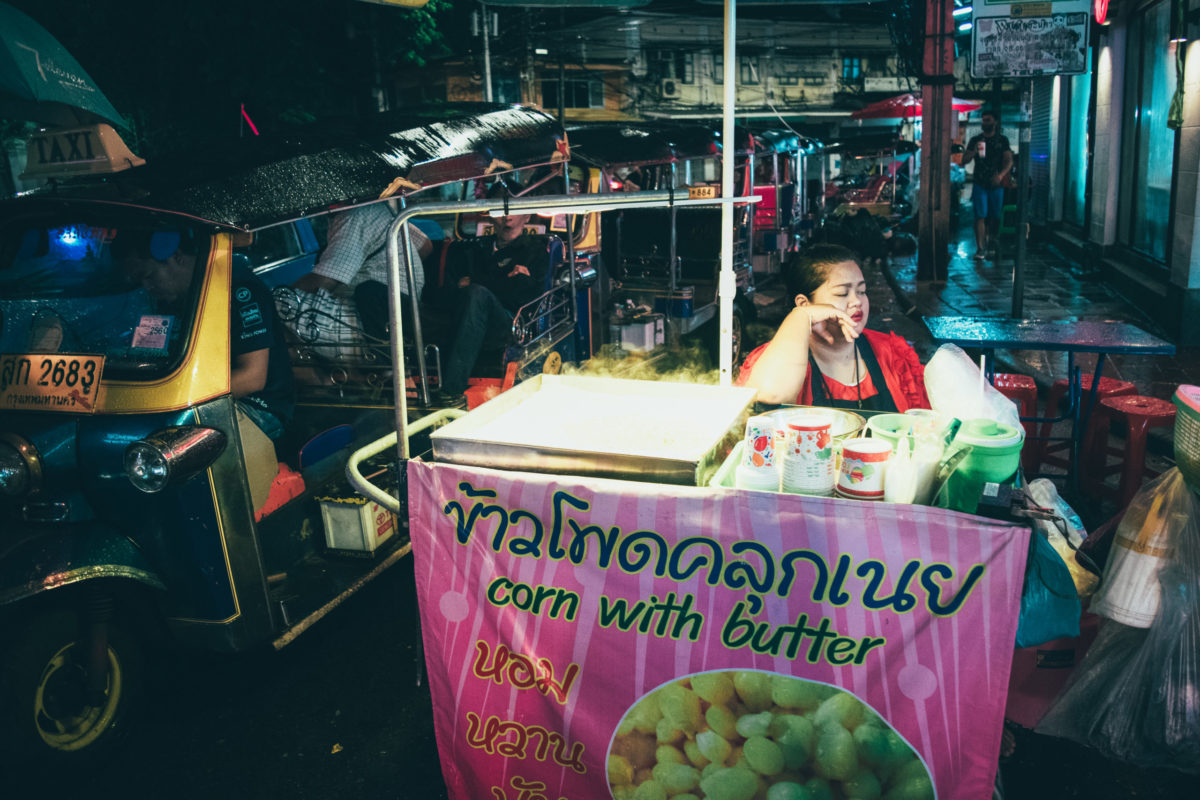By: Luke Netzley
“We are coming up on Khao San Road. It’s a crazy street. There are a lot of tourists there. It’s very busy.”
Raindrops started to form on the window as the car rolled slowly through traffic in Bangkok. When we finally pulled up to the curb, we were met by what looked like a Thai version of the Las Vegas strip, except condensed and filled to the brim with wandering bodies. The rain continued to pour, but that did not stop the crowd of locals and tourists from flooding the bustling road. I was glued to the pavement, awestruck by the scenes I was witnessing.
The humid air felt thick and smelled of fried meats. The clouds had rolled through and the storm had ceased for a moment, leaving puddles and debris throughout the city. The aftermath was beautiful. The traffic lights spiraled down into the pavement like colorful veins stretching into the depths of a dark world.
As I made my way down Khao San Road, I was greeted with smiles and laughter. There were vendors selling tropical fruits and other fresh meals. The steam of the grills danced through the wind. Everywhere I looked there were nooks to explore, shopkeepers to bargain with, dance floors to enter, and travelers to speak to. It all felt so poetic to me. I had to go further.
The rain returned, as it always does in the summertime, and I was caught without an umbrella. A daunting orange sign looming above provided temporary shelter. It seemed as though every building was a nightclub and that the pavement itself was bouncing to the songs of the loudspeakers. The neon colors and bright lights were intoxicating, the noise relentless. I somehow felt both repulsed and drawn into the fray.
Behind the front row of buildings on Khao San Road lies a complex network of alleys and spaces. The corridors were full of apparitions; ghostly figures floating into dimly lit rooms. I wasn’t sure where to go or what time it was, and I became tangled in it all. The winding wires and puffs of smoke unearthed a sullen nostalgia for a caring face. The seraphic beach paradise of Phuket felt out of reach both physically and mentally. That sunlit spectacle became just as lost as I in the dizziness of the world around me. Bars and clubs formed in the space where white sand and palm trees once stood. A discount disco ball replaced the sun. Shady men sold produce, pottery, and people.
But I was not in danger. I was, in fact, the intended customer, the one who indulged, the one who robbed, the one who ruined. I was the young white male who was meant to arrive from a faraway place and spend my money, fueling one of the most sinister industries in Southeast Asia: human trafficking. I felt disgusted by this game and the role I was expected to play in it. The night became more menacing as the situation became clearer. The Thai girls around the club are not brought there by their own free will. The warmth of the bar owner is a façade reserved for the customer. The police van parked down the road is not there to protect, but sits parked as an ornament. The stories were real, except no longer just stories to me. They became images and facts engraved in my mind, never to leave.
I left Khao San road late that night, accompanied by friendly faces, yet the road still stays with me. The twisted harmony between the beauty and madness of it all never ceases to astound me, and I can still see the speechless mouths and longing eyes of those who watched the frenzied madness reign over their home.
Luke Netzley is an American-born photographer and student of journalism attending Cardiff University in Cardiff, Wales. Follow his adventures at @lukenetzley and read his writing at lukenetzley.com.



